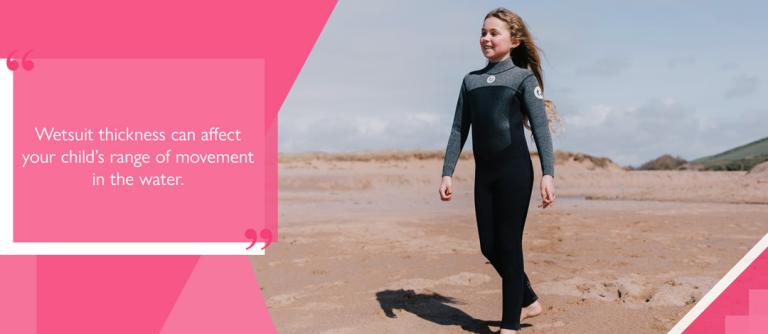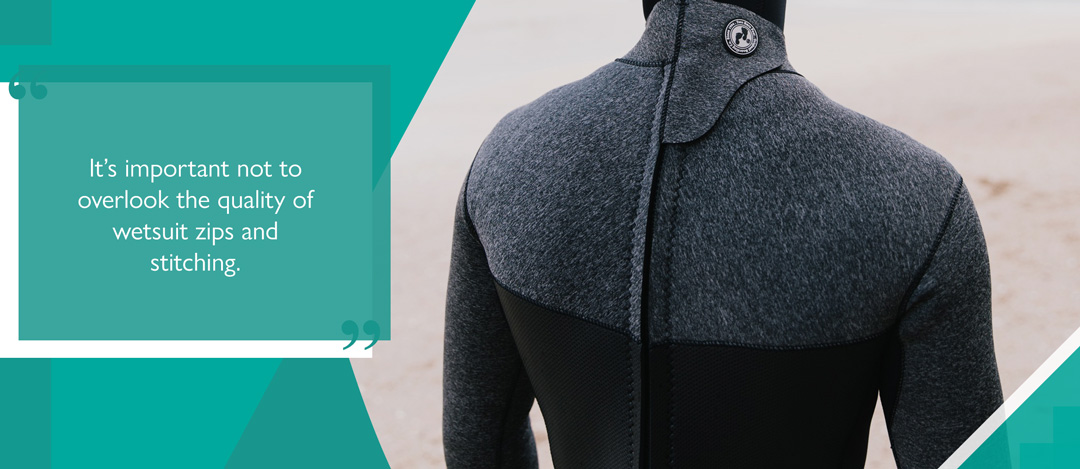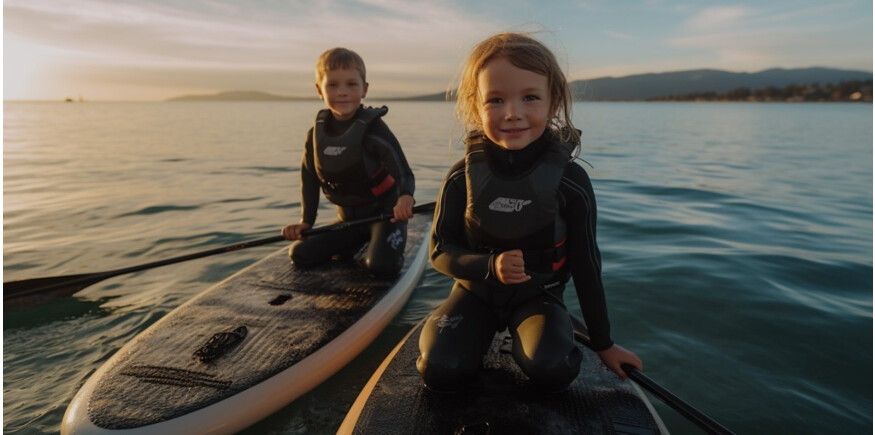It’s important that your child is adequately protected from the elements while enjoying their favourite water-based activities. This means choosing a reliable, high-quality wetsuit for them.
However, with so many factors to consider, such as fit and functionality, finding a good wetsuit can be challenging if you’re not sure what to look for.
Hopefully, the following guidance will help take some of the strain out of making a good decision.
How a kid's wetsuit should fit
Wetsuits utilise neoprene: an insulating material which keeps the wearer warm by trapping a thin layer of water between the material and the skin. The water layer is retained in the suit by the neoprene and warmed by body heat.
Unfortunately, the idea of ‘growing into’ a wetsuit doesn’t apply. If it does not fit well now, the insulating process will be compromised.
If the wetsuit is too tight, it will prevent water from entering the wetsuit. A loose fit will simply allow cold water to flush through, preventing the formation of a conductive thermal barrier.
A good fit should feel like a second skin: with tight seals around the neck, ankles, and wrists to prevent water flushing through.


Wetsuit sizing
To purchase the right size wetsuit for your child, you will need to measure:
· chest
· neck to crotch
· waist
· hips
· inside leg
You can refer to our comprehensive guide to wetsuit sizing for detailed advice on how to take these measurements accurately.
Once properly sized, and the wetsuit is in your possession, remember to ask your child if the wetsuit feels comfortable when they try it on.
Check the material for any pulling or bunching. In addition, make sure there is plenty of material across the chest for comfortable breathing.
Choosing a wetsuit thickness
Wetsuit thickness is often denoted by two figures. The numbers correspond to the thickness of neoprene material in millimetres across different parts of the body. If the numbers differ, this indicates that material thickness will vary across the wetsuit.
For example, a 3/2 wetsuit has 3mm of neoprene across the torso and 2mm covering the legs and arms.
Where thickness varies, the torso tends to be higher, as this affects core body temperature. Thinner material on the arms and legs can aid the range of movement, if this needs to be prioritised for the activity the wearer will be participating in.
The difference between thick and thin wetsuits
Thicker wetsuits use 4–5mm of neoprene and provide better protection in cold weather, deep sea dives, or prolonged exposure to cold sea temperatures. A 5/4 wetsuit offers solid protection throughout winter. A 4/3 wetsuit will offer increased flexibility, while still fending off the cold.
Thinner neoprene wetsuits vary. Some make use of 2.5 mm all over, while other spring/summer variants may utilise a 3/2 configuration.
With less neoprene, a wetsuit is better able to keep your child cool in warmer weather. It will also be less restrictive, providing increased flexibility.


Different types of wetsuits
Different wetsuit cuts and designs offer different benefits.
During the summer season, a shorty wetsuit insulates the chest, while the arms and legs remain exposed. The short cut also means the wearer is afforded a lot of freedom to move.
Two-piece wetsuits are versatile; you can mix-and-match a combination of options to suit the current conditions. For example, a wetsuit jacket top can have short or long arms. This can be paired with either shorts or long pants.
Full-length wetsuits are suitable for unpredictable weather – they can insulate while protecting skin from harsh UV rays. The thickness will need to be matched to the temperatures and activity.
You may also wish to consider optional wetsuit accessories for your child, such as a thermal rash vest or wetsuit gloves, for additional warmth and protection.
Zips, bindings, and seams
Before investing in a children’s wetsuit, consider the quality of binding elements included in the design. These can impact how well a wetsuit functions, and whether it is comfortable.
Back zips can be more comfortable, but tend to be longer than front zips. If they are poorly manufactured, there is a slightly higher risk of water flushing through the zip and nullifying the wetsuit’s insulation.
Front chest zips can make getting changed easier to do alone. Again, this can be a point of concern on a wetsuit of inferior quality, as the zip may have the potential to irritate the wearer’s neck.
Stitching can determine how watertight and comfortable a wetsuit will be. Poor quality overlock stitching may lead to an irritating fold of fabric inside the wetsuit.
Wetsuits typically feature flatlock stitches or glued seams, which are more reliable, watertight, and comfortable. However, with glued seams, it is important to be aware they can be prone to wear and tear.


Reliable and comfortable wetsuits for children
At Two Bare Feet, we provide an extensive range of wetsuits for children. Made with high quality materials for optimal comfort and insulation, the premium neoprene offers effective insulation, while machined flatlock seams ensure a warm, dependable, and flush-free fit.
Our junior wetsuits are available in a variety of designs to suit external conditions and activities. The full-length winter wetsuit range comes in a 5/4 option, or 4/3 if added flexibility and versatility is important. Both use a back zip for easy access.
At the thinner end of the selection, we offer a range of cuts and styles. For all-over summer protection, our 2.5mm full-length wetsuits are ideal. We also stock 2.5mm sleeveless variants, summer shorty wetsuits, and two-piece wetsuit and jacket sets.
If a little extra core protection is favoured, but conditions are fine, opting for our 3/2 wetsuit range is a smart choice – either in a full-length cut, or long arms/short pants combination.
To complement your child’s wetsuit, we also supply a selection of wetsuit accessories in smaller sizes, and changing robes for staying warm and dry once the fun is over.




